2023 Gold Medal Plant Winners You Need to Know
By Jill Brooke
The Pennsylvania Horticultural Society (PHS) has shared its list of new Gold Medal Plant winners, now available to the public through most garden retailers.
PHS is an internationally respected organization founded in 1827, and the producer of the world-famous Philadelphia Flower Show, the oldest flower show in the United States.
As Sam Keitch, PHS Manager of Design and Procurement. explains, this Gold Medal list – now numbering 150 plants – is designed to insure that “new” gardeners can easily plant with confidence and produce results to encourage future gardening. Including this year’s winners, all plants are indicated for their hardiness in the 5 to 7 hardiness zones, which covers the Mid-Atlantic region but are also valid in other regions.
“These are the perfect plants and trees to anchor any garden,” he says. “It will fit perfectly in any setting. The database is such a great informational tool for anyone. It’s a win-win.”
The Gold Medal Plant Program was created by PHS in 1979 to celebrate and showcase beautiful, easy-to-grow plant species ideal for home gardening and landscaping trends. Each year, a committee of horticulture experts convene to assess trees, shrubs, and perennials on various criteria, including their suitability for home gardens in the mid-Atlantic region, their ease of cultivation, ready commercial availability, wildlife value, weather tolerance, and pest resistance.
“We hope that the PHS Gold Medal Plants list will help gardeners find the right species of plants to suit their garden’s unique needs while also inspiring them to include plants they may not have considered before,” adds Andrew Bunting, PHS’s Vice President of Horticulture. “Each year’s Gold Medal Plant winners include a variety of plants for every garden condition, size, and need.”
2023 PHS Gold Medal Plants
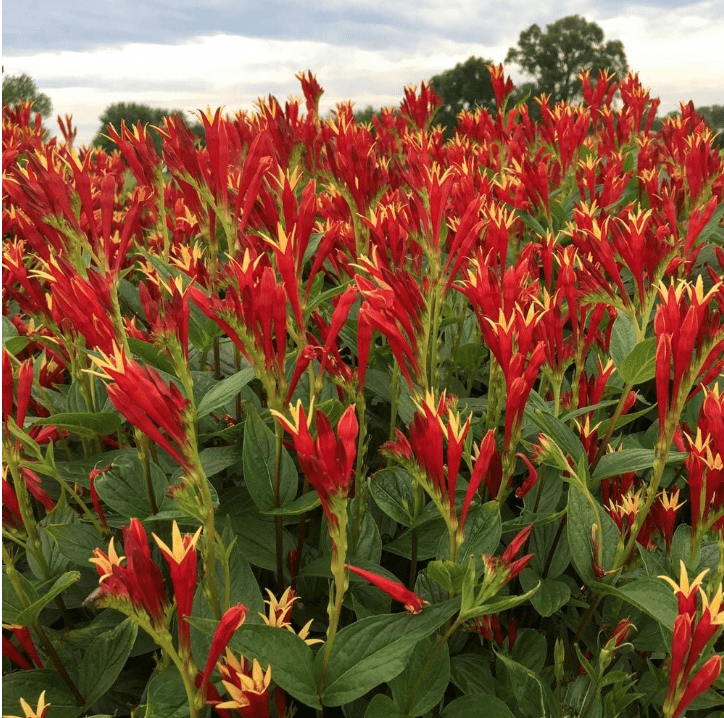
Spigelia marilandica
This native perennial blooms in early summer, featuring red tubular flowers with yellow throats held above green foliage. The flowers are extremely attractive to hummingbirds. It grows best in mostly full sun and average to moist soils. At about 18-24″ tall, it does not “flop” with adequate sunshine. Over time this clump-forming perennial will spread in the garden. It is deer-resistant but not rabbit resistant and is good for small space gardens. Hardy in zones 6 through 9.
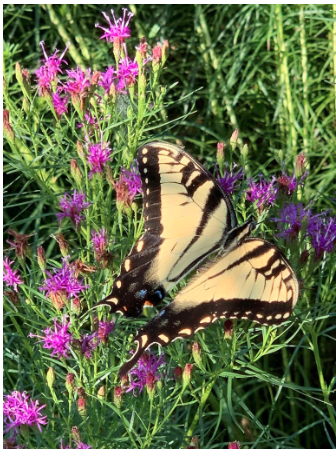
Vernonia lettermannii ‘Iron Butterfly’
The ironweed selection is a native perennial that thrives in a wide range of soil conditions. It will also survive hot and dry periods of inundation. This fall-blooming perennial starts flowering late in the season when flowers in the garden are not plentiful. Growing to 18 inches tall, the stems are topped with many fine bright purple flowers. The thread-like foliage is showy and turns brilliant golden hues in the fall. ‘Iron Butterfly’ is a great pollinator-attracting plant. It is hardy in zones 4 through 8.
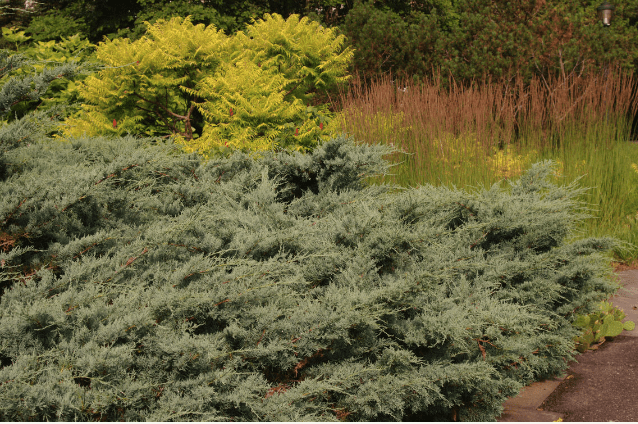
Juniperus’ Grey Owl’
This native shrub has a proven track record as a low-spreading evergreen that thrives in the sun. It tolerates extreme heat and cold and withstands poor soil. It is drought-resistant and has attractive evergreen silvery-blue-green foliage. It produces many berry-like bluish cones that attract birds. ‘Grey Owl’ grows fast, making it an excellent choice for covering a sunny bank or other large, open area. It is deer resistant, attracts birds, and has winter interest. It is hardy in zones 4 through 9.
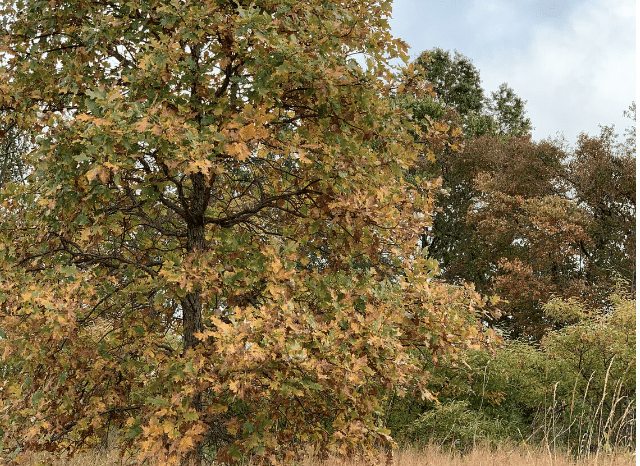
Quercus bicolor
This is a multi-season native tree that will survive in both urban and garden settings. It tolerates most soil conditions better than many other oak species. Reaching over 100 feet tall with an equal spread, it is a beautiful and stately tree. The acorns are an important source of food for wildlife. The fall color is golden to yellow. Its growth rate is fast at 1.5 to 2 feet per year. The branching habit resembles that of pin oak, but the branches are shorter and stouter. It attracts birds and is hardy in zones 4 through 8.
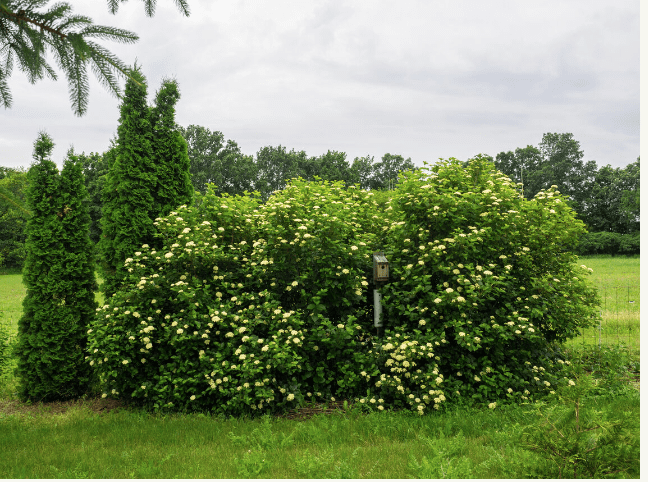
Viburnum dentatum Chicago Lustre
Chicago Lustre® arrowwood viburnum gets its name from its bright, shiny green mature foliage. This native shrub is an ideal plant for hedging. It can grow to a mature size of 12′ x 10′. It blooms in late May-early June with white flower clusters followed by blue-black fruit in the fall. It attracts birds and wildlife and is hardy in zones 3 through 8.
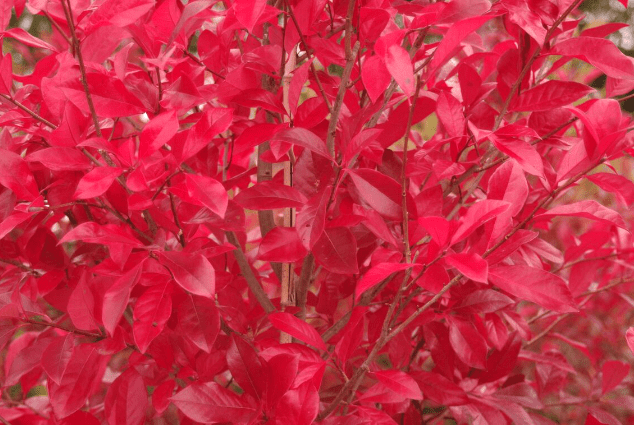
Nyssa sylvatica Green Gable
This native tree is known for its brilliant red fall color and shiny green foliage in the summer. It is shade tolerant and excellent for erosion control. This stately tree will grow to 40′-60′ tall and wide. This native tree is tough and adaptable and great as a street tree in urban conditions. It is hardy in zones 4 through 8.
